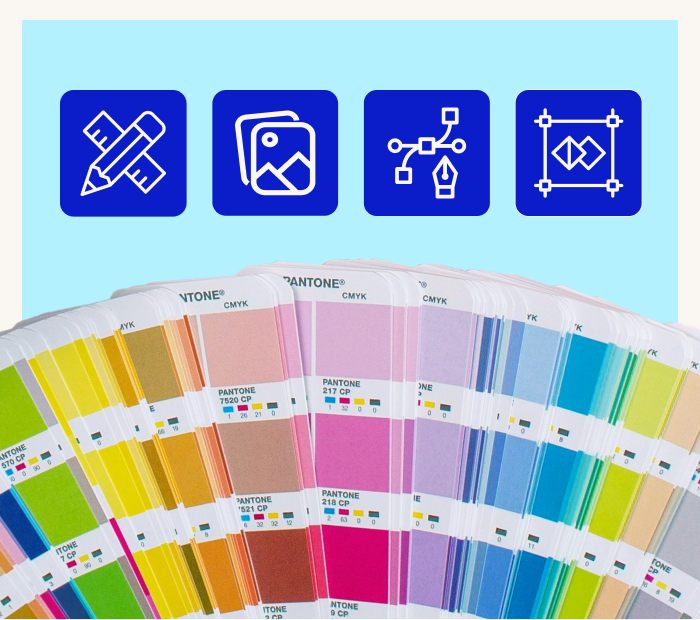
What is App Optimisation?
To optimise an app means to improve its visibility, discoverability, and performance in the app marketplace. App Store Optimisation (ASO) involves enhancing key elements of an app’s listing, like its app title, app description, app icons, app categories, app updates and user reviews. The goal is to make the app more appealing to potential users and align with app store algorithms. The main objective is to increase the app’s chances of being found by app store users and encourage more downloads, engagement, and enjoyment.
Configuring Your Settings
When you first get a new device or download a new app, it’s important to take some time to configure your settings. Understanding and customising your settings can significantly enhance your user experience and ensure your device or app functions optimally for your needs.
Familiarise yourself with your app store
You need to get familiar with your app store, whether it’s the App Store for Apple devices or Google Play for Android devices. These platforms give you access to a wide range of apps that can improve and customise your device. Take some time to explore the different categories in your app store. You can find productivity tools, entertainment apps, and more. Look at the top charts, featured apps, and user reviews to discover popular and recommended applications.
Recognise its basic functions
Once you have a grasp of your app store’s layout, it’s time to delve into its basic functions. Use the search bar to find specific apps by typing in their names or related keywords. Click on an app to access its details page, where you can find information about the app, including its description and features. To download or install an app, click on the appropriate button or icon labelled “Download” or “Install.” Keep your apps up to date by checking the “Updates” tab in your app store and updating them individually or all at once. Manage your device’s storage by using features like “My Apps” or “My Library” to view your downloaded apps, uninstall unnecessary ones, and free up space.
How to Optimise Your App's Performance
Optimising your app’s performance is essential for providing a seamless and satisfying user experience. Here are some tips to ensure that your app performs at its best.
Identify the problem
The first step in optimising your app’s performance is identifying the problem. Take the time to review valuable user feedback to see if there are any common complaints or issues that users are experiencing. Look for patterns or recurring themes that may indicate areas that need improvement. You should also utilise app analytics tools to gather data on app performance, such as load times, crashes, response times and other factors.
Learn about App Store SEO
Start by conducting app store keyword research to identify relevant and popular keywords that users are searching for in relation to your app. Use these keywords strategically in your app’s title, description, and metadata to increase its chances of appearing in app store search results. Include enticing screenshots and app preview videos that showcase your app’s features and benefits. Visuals can significantly impact a user’s decision to download an app, so make sure they accurately represent your app and its capabilities.
Monitor and analyse performance
Remember to monitor and analyse your app’s performance regularly in the app store. Look for improvement opportunities and adjust your app store listing as needed. App Store Optimisation is an ongoing process that requires continuous monitoring and optimisation.
How the app store ranking and algorithm works
The app ranking organises apps based on popularity, relevance, and performance. One of the key factors in the app store ranking is the number of downloads an app has received. The more downloads an app has, the higher its ranking will be. However, it’s not just about the quantity of downloads but also the consistency and growth rate. The algorithm considers metrics such as active users, session duration, and retention rate to evaluate how engaged users are with an app. Apps that can retain and engage users for longer durations are generally favoured in the search rankings.
App Store Optimisation Best Practices That Help with App Performance
Below are some ASO best practices to enhance app performance:
Conduct Keyword Research
To find relevant and high-ranking keywords for your app, conduct thorough keyword research. App store optimisation tools like Google Keyword Planner, App Radar, or Sensor Tower can assist you in finding the most impactful keywords to incorporate into your app’s metadata.
Optimise App Title and Description
Choose a clear, concise, and memorable app title that accurately reflects your app’s purpose and features. Include relevant keywords within your title, as they significantly affect app store rankings. Avoid keyword stuffing on your app store description.
Localised Content
If your app is available in multiple regions, consider localising your content, including the app title, description, and screenshots. This can help your app resonate with a wider app store users.
Competitors Analysis
Keep an eye on your competitors and their ASO strategies. Analyse what’s working for them and adapt your approach accordingly.
Choose the Right App Category
Choosing the right category and subcategory for your app is important. It helps users find your app easily and makes it more discoverable.
Additional Tips
Use High-Quality App Icons and Screenshots
Design an eye-catching app icon that represents your app’s essence and purpose. Create high-quality screenshots that showcase the app’s features and functionality.
Positive User Reviews and Ratings
Encourage satisfied users to leave positive reviews for your app. Address user feedback and concerns promptly to maintain a good reputation.
Regularly Update Your App
Consistently update your app to enhance its functionality, fix bugs, and introduce new features. Frequent updates demonstrate your commitment to providing a quality user experience, which can lead to better rankings.
A/B Testing
Experiment with different elements of your app’s listing, such as the app icon or description, using A/B testing to determine which variations drive better results in terms of app downloads and app conversion rates.
FAQs
What happens if I optimise apps?
ASO improves visibility and user engagement, resulting in more downloads and potentially higher revenue. Well-optimised app listings with compelling visuals and descriptions attract users, while positive reviews and ratings further boost credibility. Consistent ASO efforts give apps a competitive advantage and improve their long-term success in the app marketplace.
What does it mean to optimise an app?
To optimise an app means to improve its visibility, discoverability, and performance in the app marketplace. App Store Optimisation (ASO) involves enhancing key elements of an app’s listing, like its title, description, icons, and user reviews. The goal is to make the app more appealing to potential users and align with app store algorithms. The main objective is to increase the app’s chances of being found by app store users and encourage more downloads, engagement, and enjoyment.




